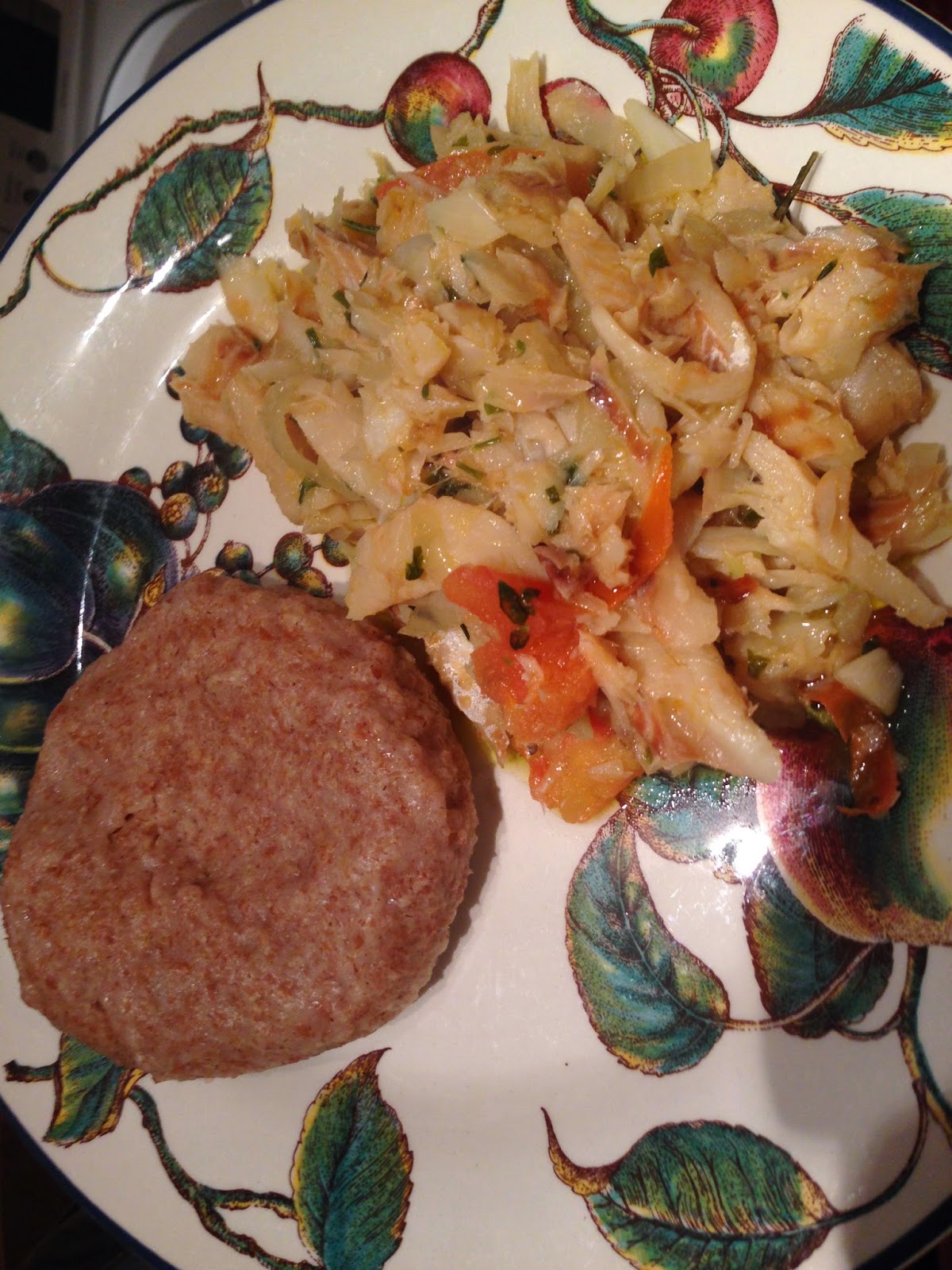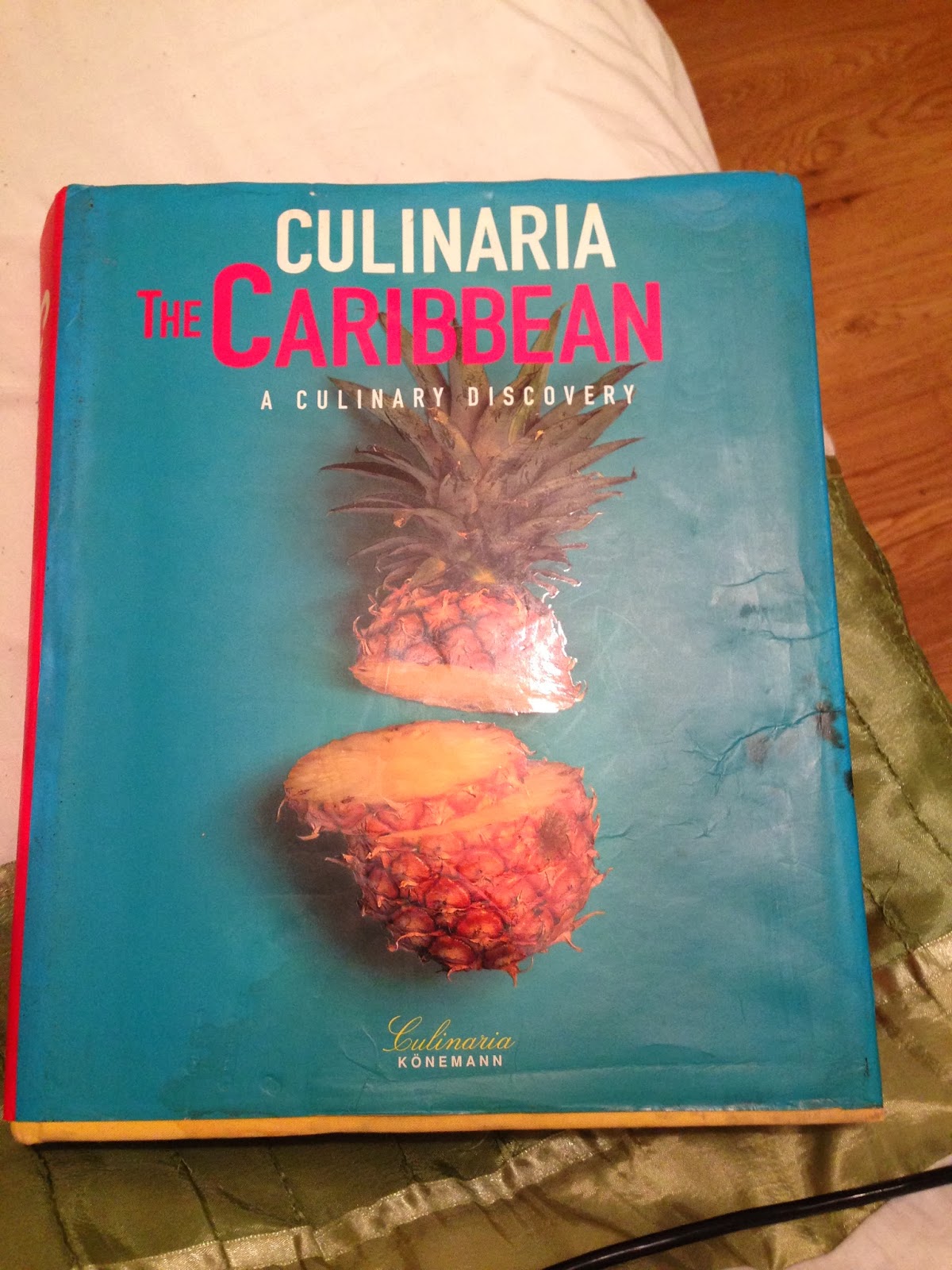One evening my mother was
reminiscent about the foods she enjoyed while she was a young girl growing up
in Dominica. I took this as an opportunity to record what she said...
First of all, she started by
telling me,
"Dominican food
consists of recipes from the native Caribs, African and European (mainly French
cultures".
I then asked her whether
Dominica shared any of the same or similar dishes as the other Caribbean
Islands. She went on to say...
"Yes, with the islands
that were once colonised by the French and reverted to England and the other
French Caribbean islands. Most of
our dishes are different from the other Caribbean islands or the names of the
dishes are different because of the language we speak (French creole (kwyéol)).
My memory of the food I ate growing up consisted of a lot of fruits, lentils
rather than kidney beans and pulses.
People were subsistence
farmers so food was plentiful and fruits and vegetables were abundant. Much of
the food was organic, except for the imported meat, which would eat when the
fishermen did not have a good catch, besides meat was considered a treat to
enjoy during Easter and Christmas".
As a young child, and even
now, I always enjoyed hearing my mother tell me how "Families'
slaughtered pigs, cows and chickens. Many families were fortunate to have had
free-range chickens walking around their yards.
The whole village would feed them and sometimes kill other people’s and
eat them too. Fish was bought fresh from
the fishermen at the seaside".
Lobster was considered “poor man food” no one bought it, the fishermen
would end up giving them away. Hard to
imagine.
I found it very interesting
that the bread they ate most of was Cassava bread rather than ordinary bread.
The Cassava bread is made from manioc and baked in the traditional way, on a
very large cast iron container on an open fire, was a popular staple diet of
the native Caribs before the Europeans and Africans arrived.
Another favourite is the
avocado, the flavours are so different from those bought over here (England). The flesh is rich and creamy.
There were other fruits like
paw paws (papaya), fresh cashew which we would pick from the tree, eat the plum,
slice the cashew open and eat the nut after rubbing it in our hair to avoid our
lips being burnt by the oil from the husk.
We used the husk to play games. How imaginative is that?
Each Island has its own
National dish, Dominica's own being quite unique. Mountain chicken
(frog) and before you go urgh, don’t knock it before you try it. It is called mountain chicken because it
lives in the mountains of the island and tastes like chicken.
There is a knack to killing
and cleaning mountain chicken. After you
kill it you have to know how to clean it properly by removing all the nerves,
otherwise even after the head has been chopped off the frogs would continue
hopping around (like headless chicken), pardon the pun. Once the frog was
killed properly, the next part was being able to clean it properly by skinning
it.
My mother’s great aunt was
particularly good at that.
We both agreed that "One
meal that has remained as a favourite is lentils boiled with salt fish and
dumpling. Some meals you never forget, that is one from childhood that has
stayed with me".
(Cassava image) http://onfoodandwine.files.wordpress.com/2008/03/manioc-1.jpg
(Mountain Chicken image) https://www.google.co.uk/search?q=mountain+chicken&espv=210&es_sm=122&source=lnms&tbm=isch&sa=X&ei=0aj6UqLLOuHF7AbCqYEw&ved=0CAkQ_AUoAQ&biw=1517&bih=714&dpr=0.9#facrc=_&imgdii=_&imgrc=neKg7xpkuuKciM%253A%3BmEMDcpKC5_rvSM%3Bhttp%253A%252F%252Fwww.shoarns.com%252FMountain%252520Chicken%2525201.jpg%3Bhttp%253A%252F%252Fwww.shoarns.com%252FMountainChicken.html%3B575%3B331














